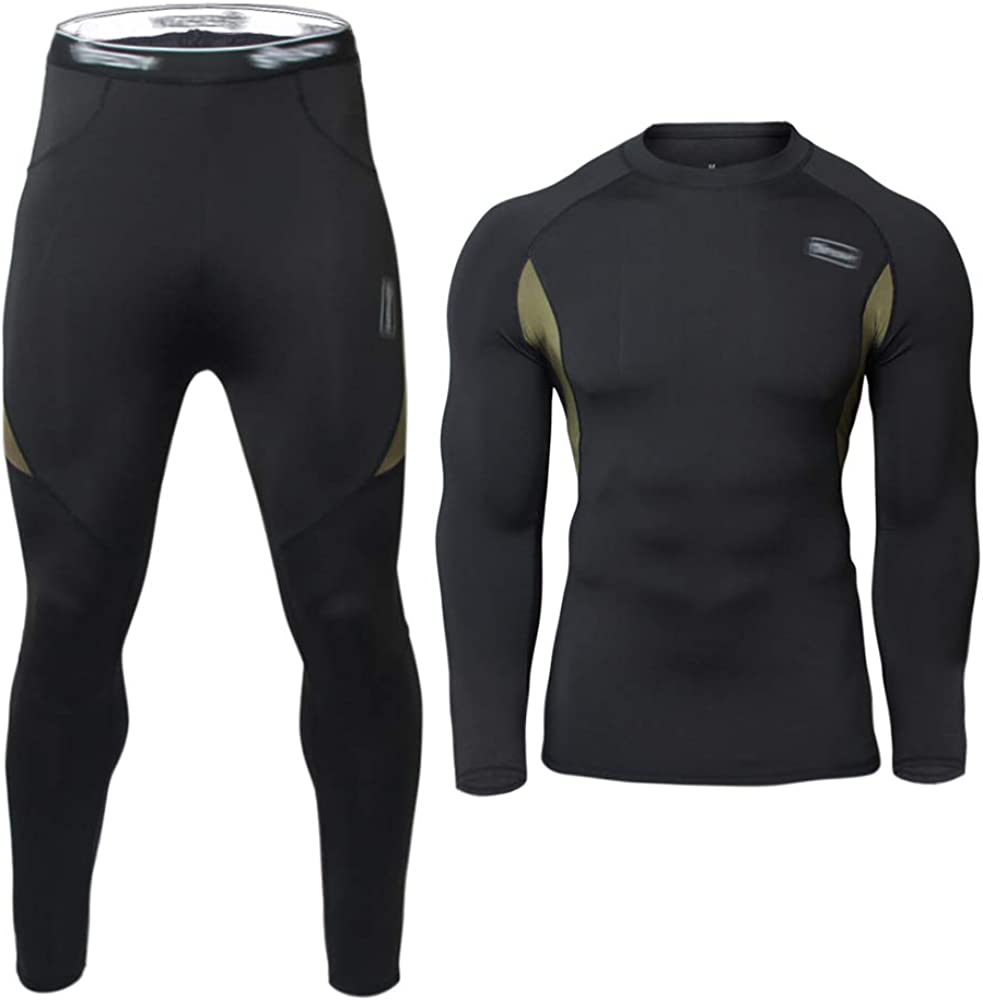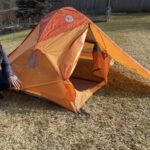Whether you’re camping in late fall, early spring, or during the dead of winter, wearing thermal underwear may be necessary to keep yourself adequately warm and dry.
Each layers of clothing you wear works together, retaining heat, expelling moisture, and preventing ingress of water and wind.
So, let’s dive into how thermal underwear works, and why thermals are necessary for certain types of camping.
Article Contents
- How Does Thermal Underwear Work?
- At What Temperature Do You Need Thermal Underwear
- Best Thermal Underwear for Camping

How Does Thermal Underwear Work?
Layering clothes while camping allows you to utilize multiple fabric properties collectively.
- Layering clothes helps create a protective shield around your body that will help maintain your comfort level yet allow you to be active in all sorts of weather conditions.
There are three primary layers of clothing to consider – base layer, middle layer, and outer layer.
The base layer, also known as underwear, consists of clothing that sits next to your skin. Thermal underwear is considered a base layer.
- Thermal underwear is not meant for insulation or heat retention. Instead, the role of thermal underwear is to wick away moisture and sweat which helps keeps you dry and comfortable day and night.
Quickly absorbing and removing moisture from your body prevents over-cooling through evaporation which is an endothermic (heat absorbing) reaction. In other words, over-cooling can leave you chilled.
In an already cool or cold environment, feeling chilled can rapidly descend into hypothermia.
- Hypothermia occurs when the core body temperature decreases from a normal internal temperature of 36.5-37.5 oC (97.7-99.5 oC) to below 35 oC (95 oF) [Reference].
Wearing Traditional Underwear with Thermals?
Underwear and bras can be comfortably worn underneath thermals without limiting your range of motion. In fact, most thermal underwear is purposefully designed to work perfectly fine with under garments.
At What Temperature Do You Need Thermal Underwear?
This one’s a bit tricky because, although every human body is more-or-less the same, every body has their own unique comfort temperature range. Some people run hot, while some people run cold.
Body Heat Dissipation Explained
From a physiological perspective, the body is continuously generating heat as a by-product of natural internal functions – the heart pumping, muscles contracting, or bio-chemicals reacting for food processing.
It’s essential that excess heat is dissipated from the body, either through exhaling warm moist air, evaporation of sweat, or convective heat loss with ambient air.
Heat dissipation is optimal when the ambient temperature is around 21 oC (70 oF), which keeps the core body temperature around 37 oC (98 oF) [Reference].
Cold Temperature Limit
Generally, ambient air temperatures between 10 to 15 oC (50 to 60 oF) and below are when thermal underwear is recommended to be worn under your pant layer if you’re outside for extended periods (greater than 15 minutes).
This is especially true if you’re outside and likely to sweat. Any build-up of moisture will cool your body once you stop being active and the outside temperature starts to drops or the wind picks up.
Personally, my wife and I have very different temperature limits for when we like to slip into our thermals.
For my wife, she starts feeling cold at temperatures around 15 oC (60 oF). She also likes to stay relatively toasty at night in her sleeping bag, so thermals help keep her warm and dry.
Whereas for me, I like to start wearing thermals around 10 oC (50 oF) or lower. I don’t mind feeling a bit cooler at night.
Best Thermal Underwear for Camping
By far the best option for thermals is Merino wool thermal underwear. As a natural material, Merino wool is on the more expensive side; however, the cost is well worth the performance.
Merino Wool Properties
Merino wool is a fantastic material with so many beneficial properties:
- Insulator even when wet
- Wicks away moisture
- Non-irritating fabric
- Anti-microbial properties which battles odours
- Machine washable, and safe for tumble drying on low temperature
Thermals are typically offered in a variety of “weights” or densities.
Pro-tip: For camping, I suggest wearing a low to mid weight version (140 to 200 g/m2). For dedicated winter camping or winter activities such as snowshoeing, I recommend a heavy weight version (+200 g/m2).
Adventure seekers from hikers to hunters will benefit from using Merino wool thermal underwear when it’s cold out. It’s the perfect base layer for hanging out at the cottage or to keep warm while camping!
This post contains affiliate links, which helps support this blog at no cost to you!
Related Posts
- Backpack Search | 30L Backpack Buyer’s GuideThere are thousands of backpacks on the market today. And, with so many models and… Read more: Backpack Search | 30L Backpack Buyer’s Guide
- How to Buy a Camping TentThe sheer number of tents on the market these days is out of control. There… Read more: How to Buy a Camping Tent
- What is Sleeping Pad R-Value? Insulation ExplainedOne of the best ways to sleep comfortably while camping during cooler conditions is by… Read more: What is Sleeping Pad R-Value? Insulation Explained
- Pros and Cons of Buying a Used Tent – Is It Actually Worth It?Whether it’s from a financial standpoint or an environmental one, buying a used tent might… Read more: Pros and Cons of Buying a Used Tent – Is It Actually Worth It?




